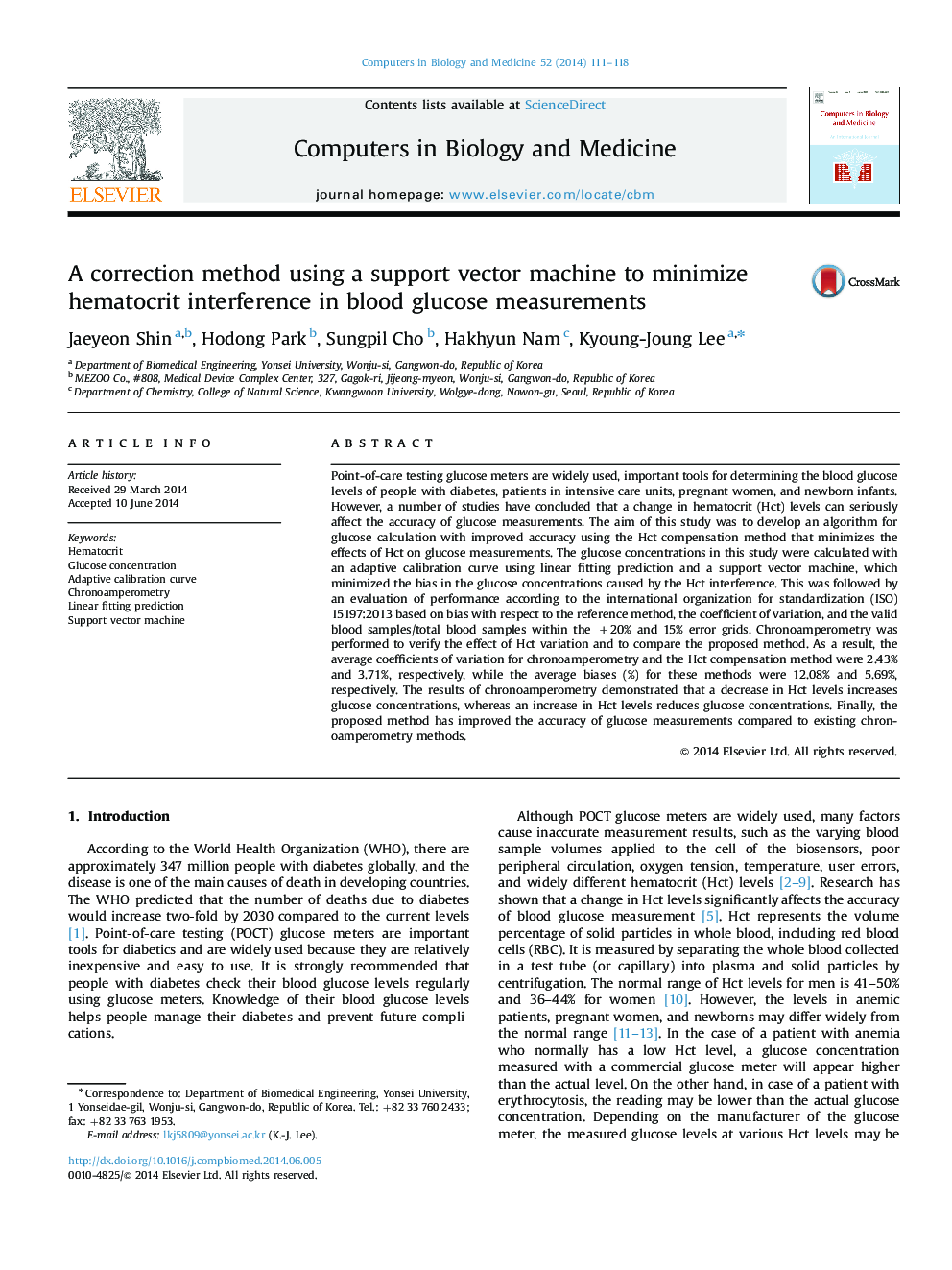| Article ID | Journal | Published Year | Pages | File Type |
|---|---|---|---|---|
| 6921563 | Computers in Biology and Medicine | 2014 | 8 Pages |
Abstract
Point-of-care testing glucose meters are widely used, important tools for determining the blood glucose levels of people with diabetes, patients in intensive care units, pregnant women, and newborn infants. However, a number of studies have concluded that a change in hematocrit (Hct) levels can seriously affect the accuracy of glucose measurements. The aim of this study was to develop an algorithm for glucose calculation with improved accuracy using the Hct compensation method that minimizes the effects of Hct on glucose measurements. The glucose concentrations in this study were calculated with an adaptive calibration curve using linear fitting prediction and a support vector machine, which minimized the bias in the glucose concentrations caused by the Hct interference. This was followed by an evaluation of performance according to the international organization for standardization (ISO) 15197:2013 based on bias with respect to the reference method, the coefficient of variation, and the valid blood samples/total blood samples within the ±20% and 15% error grids. Chronoamperometry was performed to verify the effect of Hct variation and to compare the proposed method. As a result, the average coefficients of variation for chronoamperometry and the Hct compensation method were 2.43% and 3.71%, respectively, while the average biases (%) for these methods were 12.08% and 5.69%, respectively. The results of chronoamperometry demonstrated that a decrease in Hct levels increases glucose concentrations, whereas an increase in Hct levels reduces glucose concentrations. Finally, the proposed method has improved the accuracy of glucose measurements compared to existing chronoamperometry methods.
Related Topics
Physical Sciences and Engineering
Computer Science
Computer Science Applications
Authors
Jaeyeon Shin, Hodong Park, Sungpil Cho, Hakhyun Nam, Kyoung-Joung Lee,
